STEM Is Not a Threat to a Liberal Education
A MiddleWeb Blog
 Okay, one more time – let’s try to defog the STEM debate. Misconceptions about STEM education seem to materialize daily, particularly in op-ed columns. I tried to clear the air on this issue in a post titled Six STEM Myths, Misconceptions and Jaw-dropping Whines, but it’s pretty clear that some prominent op-ed writers are not reading this blog (smile).
Okay, one more time – let’s try to defog the STEM debate. Misconceptions about STEM education seem to materialize daily, particularly in op-ed columns. I tried to clear the air on this issue in a post titled Six STEM Myths, Misconceptions and Jaw-dropping Whines, but it’s pretty clear that some prominent op-ed writers are not reading this blog (smile).
For me, the most astonishing misconception still afloat is the idea that STEM education somehow sabotages other subject areas such as the fine arts, language arts, and humanities.
In defense of a STEM education
As an example, I’m going to reference a recent post by Fareed Zakaria, a CNN foreign affairs expert, columnist for The Washington Post, and author of the 2015 book, In Defense of a Liberal Education.
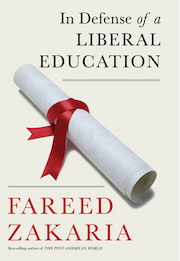
Specific technical skills? Really, Dr. Zakaria? Well, if you limit the definition of STEM education to teaching a set of specific, technical skills it’s no wonder you have problems with the idea. I would, too.
But consider this: authentic STEM education focuses on producing students who (1) have a deep understanding of science, mathematics, and technology; (2) are able to integrate and apply that knowledge to problem-solve, create, and innovate; and (3) use engineering design processes to think about and develop solutions for real world problems.
So, this is dangerous? Or defined as simply a set of technical skills? Not in my book. Let’s look at a couple of Zakaria’s other statements (in italics):
No matter how strong your math and science skills are, you still need to know how to learn, think and even write. Well, of course. And nothing about STEM education prevents that. STEM is not exclusionary! It’s an initiative designed to teach and apply science, math, and technology differently. Students must learn other subjects with equal rigor. I’d even add that all students need to have a background in the arts – experience in expressing the beauty and the best of what makes us human. Applying exclusionary statements to STEM indicates a real lack of understanding about the vision for STEM education.
- Critical thinking is, in the end, the only way to protect American jobs. Again – a no-brainer. But to Zakaria, critical thinking is somehow excluded from STEM education. Or can only be obtained apart from STEM education. (This portion of the article seems to equate STEM with computer technology.)
To be fair, Zakaria is aiming his article at what he sees as a short-sighted view of education by politicians who want to de-emphasize liberal arts education at the college level in favor of science and math content. That does show their lack of understanding of the value of liberal arts and its critical place in society, but it doesn’t make STEM studies any less valuable to our nation’s well-being.
If you read his article, you will agree with much of what Zakaria says about the need for a broad-based education. It’s not that his points are incorrect – they are mostly on target, in fact. But he builds his case by setting the liberal arts against STEM education – and a vastly incomplete view of STEM education, at that.
The scary thing about his article is that it perpetuates the myth of a face-off between STEM and the liberal arts. And others may begin to apply this kind thinking to K-12 education. Ever heard this kind of rhetoric?
- We can’t have STEM because that means we have to de-emphasize language arts, social studies, etc. Or,
- We have to build all of the other subjects into our STEM initiative. (See STEM 2015: Are We Losing Our Focus?)
Nonsense. Let’s try again to clear up the fog of confusion.
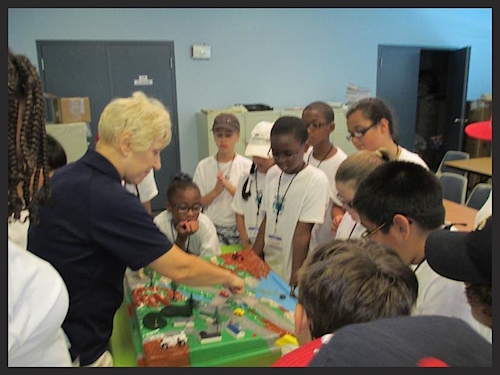
Middle grades STEM students learning about water quality issues.
Combine – Design – Create – Solve
STEM is an initiative that focuses on combining knowledge from science, mathematics, and technology to solve real world problems using an engineering process. It focuses on math, science, and technology in a different way – one that prepares students with a variety of 21st century workforce skills, including critical and creative thinking.
Schools have a curriculum that offers students language arts, history and social studies, fine arts, and a plethora of other subjects in addition to math, science, and technology. STEM education does not replace the other subjects. It does not de-emphasize other subjects. It focuses on science and math, through an engineering lens.
STEM relies on the other subjects to join in the task of producing the well-rounded students who can read, write, think critically, and do all of those things that Zakaria identifies as important.
As far as building other subjects into the STEM initiative: if other subjects can correlate their curriculum objectives with STEM, then that provides benefits for students as they begin to see connections among all their subjects. However, if you try to build a STEM program that mashes all of the curriculum into one initiative, don’t call it STEM. Call it project-based learning or PBL – an integrated program that does this quite well when implemented properly.
Drilling down a little deeper
Zakaria’s quick condemnation of STEM might be understandable from one perspective. If you google “STEM” you will immediately see that educators and policymakers often slap the STEM label on very traditional science, math and technology coursework. For those who may still think that STEM education is just a new name for old-style curriculum, take a look at what a good K-12 STEM program does:
- Involves students in compelling real-life problems. Think real social, economic, and environmental situations in their local and extended communities – clean water, food shortages, increase in diseases, energy shortages, and air quality to name a few. Students can relate to (and get excited about) developing solutions for problems.
- Integrates and applies science and math grade-level objectives through engineering challenges. High quality STEM curriculum is not math and science “lite.” Rather, through authentic experiences, students understand how key science and math concepts are applied in the world.
Uses an inquiry-based, hands-on learning approach that engages students, welcomes their innovative ideas, and allows for multiple possible solutions to problems. STEM education encourages critical thinking and creativity in a low-risk environment where failure is regarded as a necessary part of developing a solution.
- Involves students in regular collaboration and teamwork to research, brainstorm, plan, design, and create prototypes for their engineering challenge.
- Engages students in testing, analyzing, and evaluating their results; and in using that information to redesign and improve their proposed solutions.
- Involves students in using a variety of communication approaches to discuss and describe their work.
- Involves an appropriate use of digital and other types of technology in addressing STEM challenges.
These components comprise the acid test for genuine 24-carat STEM. When you hear people disparage STEM as simply a set of technical skills (which, by the way, are valuable skills), or vow that STEM hurts the liberal arts and other programs, please help to clear the fog for them.
Photo credits: RDECOM, Engaging Youth through Engineering, CERDEC

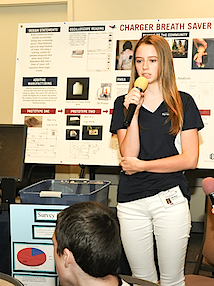 No matter how strong your math and science skills are, you still need to know how to learn, think and even write. Well, of course. And nothing about STEM education prevents that. STEM is not exclusionary! It’s an initiative designed to teach and apply science, math, and technology differently. Students must learn other subjects with equal rigor. I’d even add that all students need to have a background in the arts – experience in expressing the beauty and the best of what makes us human. Applying exclusionary statements to STEM indicates a real lack of understanding about the vision for STEM education.
No matter how strong your math and science skills are, you still need to know how to learn, think and even write. Well, of course. And nothing about STEM education prevents that. STEM is not exclusionary! It’s an initiative designed to teach and apply science, math, and technology differently. Students must learn other subjects with equal rigor. I’d even add that all students need to have a background in the arts – experience in expressing the beauty and the best of what makes us human. Applying exclusionary statements to STEM indicates a real lack of understanding about the vision for STEM education.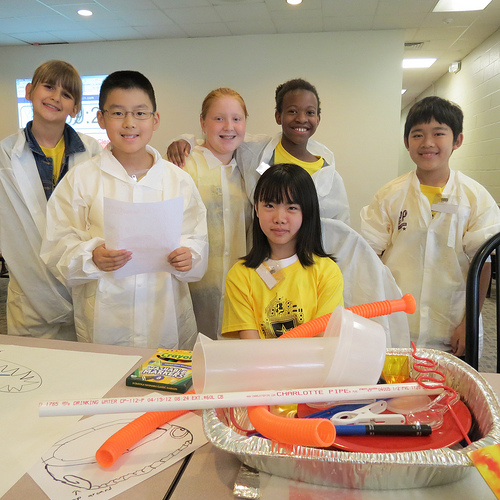
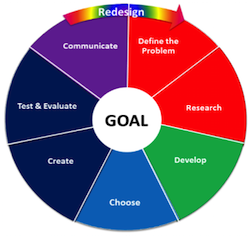

































STEM is VERY important–but let’s not kick learning about history, social sciences, drama, writing, literature, art, instrumental and vocal musics and world languages and cultures. Raising little robots with just STEM classes robs us of beauty and understanding each other in this world, which is necessary on this ever shrinking planet.
Absolutely correct, Emily – that’s what I said in this post. “Schools have a curriculum that offers students language arts, history and social studies, fine arts, and a plethora of other subjects in addition to math, science, and technology. STEM education does not replace the other subjects. It does not de-emphasize other subjects.” … “Students must learn other subjects with equal rigor.” I even pointed out that all students need to have a background in the arts – experience in expressing the beauty and the best of what makes us human.
I continue to be bewildered by the idea that STEM somehow devalues other subjects – STEM is simply another and a better way of teaching math and science, and integrating technology. And it is actually probably illegal to teach only Science, Technology, Engineering, and Math. Do they do that somewhere? I think you have to teach other subjects as well in K-12 schools. In addition, I enumerated the components of a quality STEM program, which certainly doesn’t produce robots.
Thanks for your response. Continue to beat the drum for a curriculum that honors all subjects and initiatives, and allows STEM to flourish as well.
Great post Anne, and I am glad you took on Zakaria’s post. I have a lot to say about this and I think the biggest, simplest take on it is why must it be all or nothing? All STEM, no arts and humanities or vice versa. Nor does it need to be STEAM to include the arts for the sake of the arts. Arts and Humanities education must be. I think we need to teach whole children and all of this stuff is connected. STEM came about because of our low achievement in those content areas and the need to develop a workforce for the future. I am pretty sure that did not mean to create illiterate robots. I think it was to develop an interest and protocol for engineering education that focuses on applied skills and problem solving for the real world. To do that well, both the arts and humanities are needed. The idea of STEAM came (IMHO of course) about because it made tangible connections with content, offers a way to demonstrate knowledge, and may engage those who are reluctant. It gives students of all ages an opportunity to express themselves and learn how things they may like to do can connect to important content, i.e. a job for the future. There are other things: the arts and their relationship to design and solving problems of a wide variety – from personal to global. STEAM, STREAM or whatever is not to replace those aspects of content. It is to use them and at the same time, create connections for students that they may not realize otherwise. The idea of adding the arts cannot be for only its connection to deepen content understanding. It must be there to allow for curiosity, creativity and inquiry — I know those are a part of STEM as well, but the arts allow more room for trial and error and are better at building self-confidence. The arts help students understand aesthetic value and give them an opportunity to understand the powerful tool emotion is, and the benefit from those experiences. Communication and collaboration, needed for STEM, are key components of arts experiences. So STEM need not do a disservice to any other discipline. It should not belittle the importance of other content. You cannot “do” STEM without other content. It seems people need to narrowly define to understand.
I believe in the value of STEM education. I know it is the direction our country must go to prepare young people for the world to come. It takes important content out of its silos to be memorized. At the same time, I loathe the idea of taking away thought, experiment, and creativity, which in my mind was Zakaria’s interpretation of STEM. I know people do this, but the point is we must fight against the need to categorize everything in such neat boxes. STEM is truly an integrated group of subjects. Break down the walls and let learning, transfer and application of knowledge happen.
Anne, you are saying the right things, just keep saying them and maybe someday some one will actually read and understand. It is not, was not, and should not, ever be either or. Why should we deprive a child of that discovery?
Ah, Ruth! My favorite STEAM enthusiast! I do so enjoy your work and you make such a good case for enhancing STEM (or any other subject, for that matter) through the arts.(http://www.stemartseffect.com/).
Thank you for your thoughtful response, and I know how much you do value and understand STEM education.
In other words, STEM is part of the liberal arts. If maybe we spent more time understanding liberal arts, especially the fact that they have always included and have always been the heart of sicentific and mathematical learning, we wouldn’t need this conversation at all. A true liberal arts education encompasses them all. The question most should ask and research is how we lost track of that fact and now have to re-intoduce STEM as if it were an added element.
Well, you’re right, of course, Tom – a liberal education has been more or less synonymous with scientific progress, democracy, culture, society. Within that, room exists for a variety of disciplines. To answer the question you posed, perhaps we lost track of that fact when disciplines became increasingly entrenched in disciplinary silos and out of tune with realities of the 21st century. However, as in the past, liberal education is being reinvented and faculties are designing new curricula and new teaching strategies. Liberal education will survive.
The point I was trying to make in my post involves K-12 education. STEM focuses on integrating the disciplines of science and math, intentionally teaching students thinking skills and teamwork, and encouraging innovation and creativity. So I am still confused by those who see this initiative as something that is in opposition to the language arts, history, art, etc. That’s the idea I’m trying to clarify and correct. As you astutely noted – STEM is part of a liberal education.
The point is this: the prevailing attitude on college campuses is that humanities courses are for weaker students, almost guarantee a squalid existence post-graduation, and are a haven for lazy “roller skaters.”
Astonishingly there have been multiple public calls not only to de-fund humanities programs, but to outright eliminate them.
This argument really isn’t about taking a critique of STEM programs as a personal attack, but rather to ensure that students who are very gifted and interested in humanities have the opportunity to study them and to do so without wading through a ten foot deep pool of fear mongering and naysayers.
Zakaria comes at a time when the study of humanities desperately needs a champion. I for one do not want to see our schools transformed in “Spacing Guilds” of Frank Herbert fame. That may be science folks idea of a utopia, but it isn’t mine.
Zakaria is a valuable champion for liberal education. I would not like to see the humanities devalued either. I’m simply saying that it’s not necessary to attack STEM – an approach to science and math that our K-12 system desperately needs – in order to give value to the liberal arts, including the humanities.
Thanks for point out the need for pumping up support for the humanities as well – two of my three sons have degrees in the humanities – the other in computer simulation. They all love their careers. In fact, I have a humanities major as well as a biological sciences major. All people should have a choice.
Don’t make simple thing too complicated.
Liberal education includes STEM. All areas of knowledge are important.
Focusing only on STEM is dangerous. period.
Yes – focusing “only” on any subject is dangerous. I don’t know of any school that is focusing only on STEM. Schools I know teach all basic subject areas. If they include STEM then they are focusing on combining science and math in a new way – to solve problems through engineering challenges.